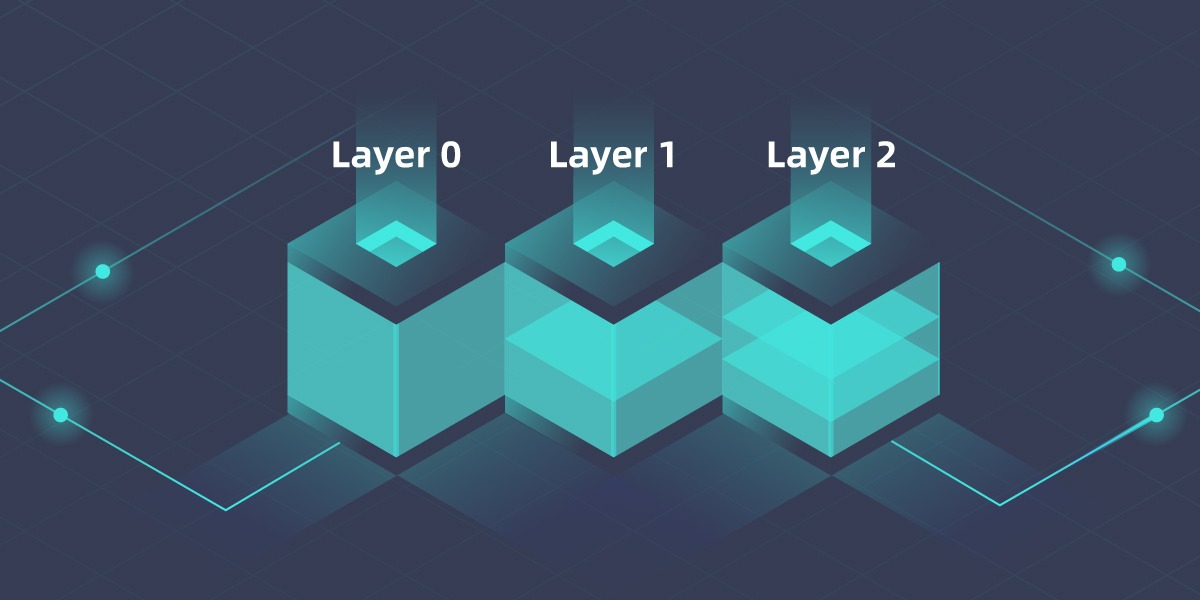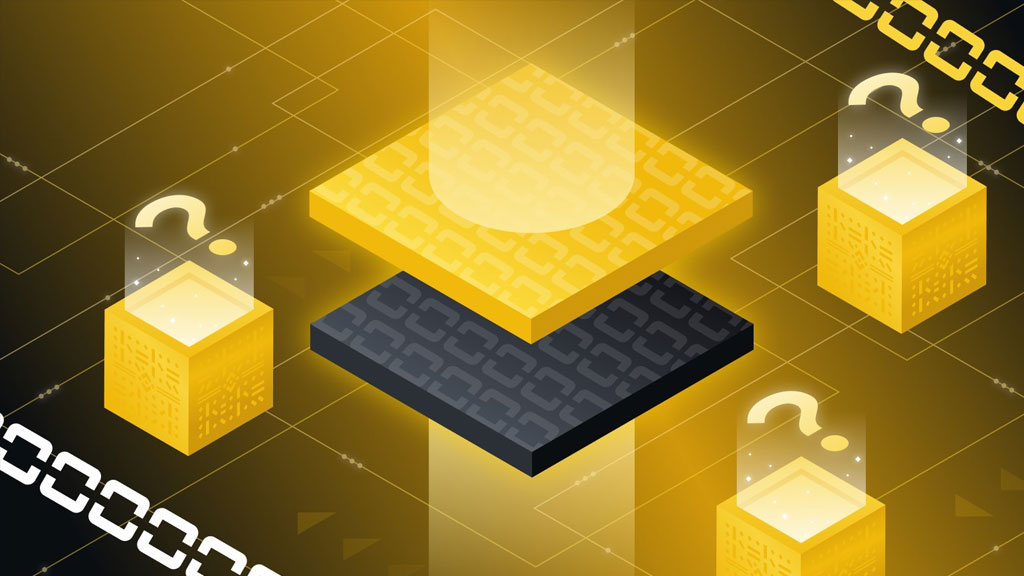The blockchain landscape has seen remarkable growth and evolution over the years. Two prominent solutions that have emerged are Layer 1 and Layer 2 blockchains, each with its unique set of advantages and drawbacks. Consequently, what is the differences between Layer2 and Layer1, Layer0?
Some definitions

Layer0 (Hardware Layer)
Layer 0 Blockchain refers to the hardware layer of the blockchain architecture, which is responsible for providing the network infrastructure required for the blockchain to operate efficiently. It includes the physical components such as processors, memory, storage, and network devices that power the blockchain network.
For example: Polkadot, Avalanche and Cosmos.
Layer1 (The foundational Layer)
The foundational layer, also known as Layer 1, is responsible for the core functionality of the blockchain. It includes the underlying infrastructure, consensus mechanisms, and data structures that support the network’s operation. Layer 1 is considered the backbone of the blockchain, and any modifications or changes at this layer can have a significant impact on the overall network.
For example: Bitcoin, Ethereum, BNB Chain…
Layer2 (The Scalability Layer)
The scalability layer, also known as Layer 2, aims to address the scalability issues faced by many blockchains. It focuses on optimizing the network’s performance by improving transaction throughput, reducing latency, and enhancing the overall user experience. Layer 2 solutions include various off-chain scaling techniques, such as payment channels, sidechains, and state channels.
For example: Arbitrum, Optimism, Linea, zkSync, Starknet…
Layer3 (The Application Layer)
The application layer, also known as Layer 3, is the topmost layer of blockchain architecture. It is responsible for providing an interface for developers to build and deploy decentralized applications (dApps) on the blockchain network. Layer 3 includes various software tools and frameworks that simplify the development process and enable interoperability between different blockchains.
For example: APIs, UI, scripts, and smart contracts.
Advantages and disadvantages of Layer 0 Blockchains

Advantages
Faster transaction processing: By utilizing the latest hardware technologies, Layer 0 Blockchain is able to achieve faster transaction processing times, resulting in a more efficient and scalable blockchain ecosystem.
Increased security: Layer 0 Blockchain’s decentralized network infrastructure provides increased security and resistance to attacks and failures. By distributing the network across multiple nodes, Layer 0 Blockchain ensures that the network remains secure and reliable.
Improved scalabity: With its focus on the hardware layer, Layer 0 Blockchain is able to achieve improved network scalability, enabling the network to handle a greater volume of transactions and activity.
Interoperability: Layer 0 Blockchain is designed to be compatible with other blockchain networks, allowing for increased interoperability between different blockchains and decentralized applications (DApps).
Disadvantages
Adoption: One of the biggest challenges facing Layer 0 Blockchain is adoption. As a new and emerging technology, Layer 0 Blockchain must overcome barriers to entry and gain acceptance from developers and users alike.
Complexity: Layer 0 Blockchain is a complex technology that requires specialized knowledge and expertise to implement and maintain. This complexity can be a barrier to adoption and may limit the number of developers and users who are able to work with the technology.
Hardware requirements: Layer 0 Blockchain requires specialized hardware infrastructure to operate, which can be expensive and difficult to obtain for some developers and organizations.
Interoperability: While Layer 0 Blockchain is designed to be compatible with other blockchain networks, there are still challenges to achieving full interoperability between different networks and DApps.
Advantages and disadvantages of Layer 1 Blockchains
Advantages
Security and Decentralization: Layer 1 blockchains like Bitcoin and Ethereum are renowned for their robust security and high degree of decentralization. They are trustless networks that rely on consensus algorithms like Proof of Work (PoW) or Proof of Stake (PoS) to ensure network integrity.
Independence: Layer 1 blockchains operate independently, meaning they have their native tokens and consensus mechanisms. This independence offers greater control and security for users.
Global Adoption: Leading Layer 1 blockchain enjoy widespread recognition and adoption, making them ideal for applications that require global reach and credibility.
Disadvangtages
Scalability Challenges: Layer 1 blockchains often face scalability issues, leading to slow transaction speeds and high fees during network congestion.
Resource Intensive: Mining or staking on Layer 1 blockchains can be resource-intensive, deterring small participants and contributing to centralization.
Advantages and disadvantages of Layer 2 Blockchains
Layer 2 solutions offer compelling advantages in terms of scalability and improved user experience. However, they also come with certain drawbacks that need to be considered.
Advantages
Scalability: Layer 2 solutions enable blockchain networks to process a significantly higher number of transactions per second, addressing the scalability limitations of the underlying blockchain.
Faster Transactions: Offloading transactions to Layer 2s allows for faster confirmation times, meaning your trades are executed quickly.
Lower Fees: Layer 2s reduce transaction fees by relieving congestion on the mainnet and eliminating gas wars.
Improved User Experience: By enhancing scalability and reducing fees, Layer 2 solutions make decentralized applications more accessible and user-friend.
Interoperability: Layer 2 solutions often provide interoperability between different Layer 1 blockchain, allowing seamless transfers and interactions across multiple ecosystems.
Disadvantages
Security: While Layer 2 solutions are designed to maintain the security of the main chain, they are not immune to attacks. The security of these networks depends largely on their specific design and implementation.
Complexity: Implementing and maintaining Layer 2 solutions can be complex, leading to new challenges and potential vulnerabilities like we often see with cross-chain bridges. Therefore, Layer2 solutions have required additional development and testing efforts.
Limited adoption: Layer 2 solutions are still in the early stages of adoption, and not all applications or users are familiar with their functionality.
The differences between Layer 2 and Layer 1
|
Criteria |
Layer 1 |
Layer 2 |
|
Definition |
Modify the blockchain protocol’s base layer to achieve the desired enhancements. | Function as off-chain solutions that share the load of the primary blockchain protocol. |
|
Method of operation |
Focuses on modifying the core protocol. |
Operate independently of the primary blockchain protocol. |
| Types of solution |
consensus protocol enhancement and sharding are two prominent types of solutions. Scaling of layer 1 includes alterations to block size or block creation speed to ensure the desired functionality. |
there is virtually no restriction on the solutions that can be implemented. Any protocol, network, or application can function as layer 2 solutions off-chain for blockchain networks. |
|
Quality |
Serve as the definitive source of information and are ultimately accountable for transaction settlement.
On layer 1 networks, a native token is used to access the network’s resources. Another essential characteristic of layer 1 blockchain networks is innovation in consensus mechanism design. |
Provide the same functionality as layer 1 blockchains, plus additional characteristics. |
The differences between Layer 2 and Layer0
A layer 0 is a type of protocol that enables developers to launch multiple layer 1 blockchains that are connected to the L0 mainchain but operate independently.
Each layer 1 blockchain on a layer 0 can potentially operate its own set of L2 networks in order to scale its underlying infrastructure.
Layer 0 protocols are designed to give developers greater flexibility in how they design dapps by allowing them to also control the underlying infrastructure of their dapps, via their own blockchain.
Layer 0 networks are also optimized for cross-chain interoperability, as it becomes easier for the various L1s connected to a single mainchain to speak with one another.
By contrast, layer 2 networks exist primarily to scale a single layer 1 network. Increased protocol flexibility and cross-chain interoperability are not the core focus of an L2.
The key differences between Layers 0, 1, 2, and 3
|
Layer |
Description | Prominent |
Use cases |
|
Layer 0 |
Hardware Infrastructure | Crypto exchanges | Computational resources, robust network operations |
|
Layer 1 |
The protocols | Bitcoin, Ethereum, Litecoin, Ripple |
Secure transactions, data |
|
Layer 2 |
Scaling solutions | Binance, Coinbase, Kraken, Uniswap |
Enhanced transaction speed, reduced fees, interoperability |
| Layer 3 | Applications and services | Kraken, Uniswap, MetaMask, Pancakeswap, Opensea, Aave |
Reduced fees, interoperability,dApps, DeFi platforms, NFT, crypto trading |
Conclusion
Overall, the layers of blockchain architecture work together to create a secure, transparent, and decentralized ecosystem.
The choice between Layer 1/Layer 0 and Layer 2 blockchains ultimately depends on your specific requirements and goals.
Layer 1 offers unparalleled security and decentralization but faces scalability challenges. On the other hand, Layer 2 solutions provide scalability and cost-efficiency but may introduce some security trade-offs. Regarding Layer0, this blockchain is a revolutionary technology that has the potential to greatly improve the scalability, security, and efficiency of blockchain networks. However, Layer 0 seems to be regressing more than Layer1 and Layer2 when its attraction is significantly reduced.
Evaluating these pros and cons carefully will help you make an informed decision that aligns with your blockchain project’s objectives.
Remember, the blockchain space is continually evolving, and hybrid solutions that combine the strengths of both Layer 1 and Layer 2 are also emerging. Stay informed and adapt your strategy to the ever-changing landscape of blockchain technology.






